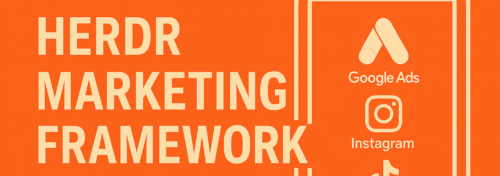The Value Proposition Canvas: Bridging Customer Needs and Business Offerings

The Value Proposition Canvas (VPC) is a strategic tool that helps businesses ensure their product or service aligns with their customers’ needs and expectations. Developed by Alexander Osterwalder, the canvas breaks down the elements of value creation, making it easier to design products or services that solve real problems and deliver tangible benefits.
This article explores the structure of the Value Proposition Canvas, its components, and how to use it effectively to create customer-centric solutions.
What is the Value Proposition Canvas?
The Value Proposition Canvas is a visual framework that helps you:
- Understand your customers better.
- Identify the core value your product offers.
- Align your business offerings with customer desires, pains, and gains.
It consists of two main components:
- Customer Profile (Understanding your audience).
- Value Map (Defining your value proposition).
The Structure of the Value Proposition Canvas
The canvas is divided into two sides:
1. Customer Profile (Right Side)
Focuses on understanding the customer’s world.
a. Customer Jobs
These are the tasks, needs, or goals your customers aim to accomplish.
- Functional Jobs: Specific tasks (e.g., filing taxes, booking a flight).
- Social Jobs: How customers want to be perceived (e.g., looking professional, eco-conscious).
- Emotional Jobs: How customers want to feel (e.g., secure, confident).
Example:
For a meal delivery service:
- Functional Job: Eating healthy meals quickly.
- Social Job: Impressing friends with gourmet food choices.
- Emotional Job: Feeling less stressed about meal prep.
b. Pains
The negative aspects or challenges customers face while trying to achieve their jobs.
- Undesired outcomes: Frustrations, inefficiencies, or risks.
- Obstacles: Barriers preventing progress.
- Risks: Fears of failure or negative outcomes.
Example:
For the meal delivery service:
- Lack of time to cook.
- High costs of eating out.
- Uncertainty about nutritional value.
c. Gains
The positive outcomes or benefits customers desire.
- Expected Gains: Minimum benefits they expect.
- Desired Gains: Aspirational benefits they hope for.
- Unexpected Gains: Surprises or extras that delight them.
Example:
For the meal delivery service:
- Affordable pricing.
- Access to gourmet meals.
- Customizable meal options.
2. Value Map (Left Side)
Defines how your product or service creates value.
a. Products and Services
The tangible and intangible offerings you provide to help customers achieve their jobs.
Example:
- Pre-prepared, healthy meals.
- Subscription plans with flexible options.
- Mobile app for ordering and tracking deliveries.
b. Pain Relievers
How your product addresses customer pains.
Example:
- Simplified meal planning.
- Affordable pricing compared to dining out.
- Clear nutritional labels.
c. Gain Creators
How your product enhances customer gains or creates unexpected benefits.
Example:
- Gourmet-quality meals prepared by professional chefs.
- Exclusive loyalty rewards.
- Same-day delivery for last-minute orders.
How the Value Proposition Canvas Works
The goal is to achieve a fit between the Customer Profile and the Value Map. A strong fit occurs when your products/services align seamlessly with customer jobs, pains, and gains.
Steps to Use the VPC Effectively:
1. Research Your Customers
- Conduct surveys, interviews, and focus groups to gather insights.
- Observe customer behavior through analytics and social listening.
2. Define the Customer Profile
List all customer jobs, pains, and gains. Use empathy to truly understand their world.
3. Map Your Value Proposition
Identify the products, pain relievers, and gain creators that align with the customer profile.
4. Test for Fit
Validate your assumptions by testing your value proposition with real customers through prototypes or pilots.
5. Iterate and Refine
Use customer feedback to adjust your offerings until you achieve a strong alignment.
Practical Example: Netflix
Customer Profile
Jobs:
- Watch engaging content for entertainment.
- Discover shows and movies easily.
- Relax after a long day.
Pains:
- Limited selection on cable TV.
- High costs of premium channels.
- Annoying commercials.
Gains:
- Affordable access to diverse content.
- Personalized recommendations.
- Flexibility to watch on-demand.
Value Map
Products/Services:
- Subscription-based streaming platform.
- Original content library.
- Multi-device accessibility.
Pain Relievers:
- Ad-free viewing experience.
- Competitive pricing.
- Cancel anytime flexibility.
Gain Creators:
- AI-driven personalized recommendations.
- Global library of shows and movies.
- Ability to download and watch offline.
Fit: Netflix eliminates customer pains and enhances gains, solidifying its position as a leader in entertainment.
Benefits of Using the Value Proposition Canvas
- Customer-Centric Design: Focuses on delivering real value.
- Clarity and Alignment: Aligns teams on what matters most to the customer.
- Strategic Focus: Identifies priorities for product development and marketing.
- Better Market Fit: Increases the chances of creating products customers love.
Tips for Effective Use
- Collaborate Across Teams: Involve marketing, sales, product, and customer service teams to gather diverse insights.
- Be Specific: Avoid generic statements; dig deep into customer needs.
- Validate Assumptions: Use real data to back up your insights.
- Iterate Continuously: The canvas is not static—update it as customer needs evolve.
Conclusion
The Value Proposition Canvas is a powerful tool for aligning your business offerings with customer expectations. By focusing on customer jobs, pains, and gains, and tailoring your value proposition to meet those needs, you can design products and services that resonate deeply with your audience.
Start using the Value Proposition Canvas today to build meaningful connections with your customers and drive sustainable growth.







